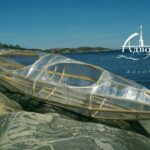DEADLIEST SPIDER BITE!
– [Coyote] You ready? – [Cameraman] Oh, spider, huge spider! Right there right there, Oh, whoa. right there, right there. Is that a tarantula? – [Coyote] No no no no no. I think that’s a funnel web spider. – Okay, a bite from this is potentially lethal. I’m just gonna set that down and see if I can coax it. It’s in, it’s in there, it’s in there. (highly energetic music) Australia’s arguably the most dangerous continent in the world. I’m sure that as your imagination begins to run wild, you are likely thinking about being snatched from a river’s edge and eaten alive by a giant Saltwater Crocodile. Or perhaps you are envisioning how terrifying it would be if you were to stumble upon and be bitten by one of it’s incredibly venomous snakes, like the Eastern Brown. However, it’s not only the reptiles that you need to be weary off. Tonight we are exploring just outside of Sydney, the most densely populated city in Australia, which also happens to be home to the world’s deadliest spider, the Sydney Funnel Web. Armed with a set of massive fangs, and an incredibly toxic venom, just a single bite from this spider has the ability to kill a human. Sounds terrifying, yet these spiders are rather illusive and tend to avoid humans at all cost. In fact, they can be rather difficult to find, as building their silk lined, funnel shaped burrows under rocks or in rotting logs keeps them hidden and out of sight. Ooh, covered in ants, watch out for that. Let’s go on the back side of this tree. There’s some logs to flip over here. So, unless you’re like me and are flipping over debris in the environment, your odds of encountering one are pretty unlikely. You ready? Lift this up. Oh, spider, huge spider. Right there, right there, Oh, Whoa. right there, right there. Is that a tarantula? No, no, no, no, no, I think that’s a Funnel Web Spider. Right there, just came out from underneath that log. Look at it’s abdomen, right there. Holy cow, that’s definitely a Funnel Web Spider. Hold on, I need to get it in this container. Oh my gosh, did you see? It’s a good thing I picked up the log from the other side. It was just burrowed right underneath there. – [Cameraman] That’s a tiny container, dude. That looks too big to be a Funnel Web. – [Coyote] No, no, no, it definitely is. Look at the front of it’s body. – [Cameraman] Oh yeah. – [Coyote] Wow, that spider’s so big, I don’t think it’s going to fit in this container. Mario, you have that bigger jar? – [Mario] Yeah, I think might have one in my backpack. Hang on. – [Coyote] Let me see if I can peel back some of these grasses. It looks like a tarantula but, Ooh, it’s moving, hurry up. – [Mario] I understand, here. – [Coyote] Okay, bite from this is potentially lethal. I’m just going to set that down and see if I can coax it. I’m going to try to coax it right into the container. Now they cannot jump but they will lunge forward. Oh, it’s in, it’s in there, it’s in. There we go. Wow, look at that. Oh yeah. That is 100 percent a Funnel Web Spider. – [Cameraman] That is a big one. – Wow, we can not miss getting this up close for the cameras. Okay, let me grab my bag and let’s head up to those rocks. Wow, that is without question a Funnel Web Spider. The question that remains is what species is it? I want to find a good, flat open rock. – [Cameraman] How about that one right there? – This? Yeah. Yeah, that looks pretty. – [Cameraman] Or that one. Is that better? – Yeah, that’s a little bit better. Let’s see if it will just sit on top of the rocks if it’s just like this. – [Cameraman] Yeah, I like this, this is good. – Wow. – [Cameraman] Let’s have a look. – That is intimidating. It does, it looks like a tarantula. I know you said, “Is it a tarantula? “You sure it’s a Funnel Web Spider?” 100 percent certain it’s a Funnel Web Spider. One of the ways that you can identify this species as such is they have a very bald cephalothorax. Now, they do have hairs on their legs, and on the abdomen, but that is how you can recognize a Funnel Web Spider, and that’s the perfect sort of place to find them. Underneath logs where they can wait and ambush for their prey. Now, they will also, obviously, be inside of burrows with those little funnel web systems, and whoa, am I glad that I picked up the log from the end that I did. Now, my fingers didn’t tuck underneath the log. I was on the top side and that’s why you always pick up a log from an area that you can see, because if you tuck your fingers underneath, you grapple onto that spider, and you take a bite, you are on your way to the hospital, without question. Okay, now, I know it’s probably kind of tough to see it inside of this container, so let me see if I can take it out and place it on the rock here, and let’s get some shots with you. Are you ready for that? – [Cameraman] Okay, let me help the guys break out the light real quick. – Okay, It’s getting dark. We’re losing light here. (dramatic music) Alright guys, we have the lights set up now, and in the lights, the spider is even more intimidating looking. You can see the sheen on the legs and the cephalothorax. Ah, it’s already cast a little bit of webbing inside the container there, and uh, I think if you guys are ready, let’s take it out of the container and see if it will just hold it’s ground here on the rock. Now, this is an extremely aggressive spider species, and often times, they won’t run, but what they will do is rear up and show you those fangs, and those front legs. Okay. We have to be very cautious. Yeah, I’m just going to gently tilt this down like this, and let’s see if it will crawl out and just stop right there, here we go. Okay, see if I can get it to stay still. Ooh, you stay, you stay, you stay. Actually, maybe I’ll do this. It seems to be more comfortable inside the container. – [Cameraman] Yeah, that works for me. How about you, Mario? Okay. This is such a dangerous spider. I mean, even more so than a wandering spider. – [Cameramen] Ohh. Okay. Look at those hooked legs, allowing it to hold on to the edge of the container. Let me see if I do this, maybe if I put the container over top of it, and give it just a second to stay right there. Now, one reason that the bite it so bad is that because when they bite, their fangs are so long, they actually will hook into you, hold on, and continue to pump venom. And it’s not like a Black Widow or a Red Back Spider where they might give you a warning bite. A bite from this spider species is full on, as much venom as I can inject. Okay, let’s try this. Everybody got a decent shot on the spider? There you have it, wow, and just for scale. Look at how big that spider is next to my hand. Not taking my eyes off of the arachnid. That is definitely as close as I feel like I can get. Alright Mark, let’s try this, I’m going to try to present it from just it’s still position, right there, and like all spider species, you see those very defined eight legs, but they also have very long pedipalps upfront and that helps them to grapple on to their prey, and when they rear up, they show those fangs, and their fangs are incredibly long. Longer, in some cases, than even some of the snake species here in Australia. Now, one of the reasons that this spider is considered so dangerous, is because they can often times be found in residential areas. The Sydney Funnel Web specifically is often times found right in people’s backyards. That’s why they tell you if you’re out there working in the garden, make sure you have on gloves. You can be tilling up dirt, accidentally grab one of these things, it bites you on the tip of the finger, and you may be seeing symptoms in as few as 15 minutes. Now, the immediate bite, you’re definitely going to notice. The fangs are long enough to draw blood, but immediately you’ll feel throbbing in your finger, and shortly after, you’ll start to feel a tingling in your mouth and lips. Now, if you’re bitten by one of these spiders, you want to apply compression to the entire arm. So, let’s say you’re bitten on the top of your finger, put compression straps up the length of your arm. That will help slow the movement of the venom into your body. Wow, that is impressive. Now, there are around 40 recognized species of Funnel Web Spider, with one of the most dangerous being the Sydney Funnel Web, and I can’t identify exactly if this is a Sydney or not, but what we do want to do is actually take this spider back with us into civilization. Where we want to go is the Australian Reptile Park. They are, oh, it’s moving. The Australian Reptile Park is the one place in Australia where they actually extract venom from these spiders and then in turn build an antivenom for people that are bitten. So, this spider that we found right here, might actually be used to save some lives. How cool is that? Awesome. I think the best thing to do now is put a cap on this, place it in my pack, and call it a night. I’m Coyote Peterson, be brave, stay wild. We’ll see you on the next adventure. Alright, we are taking this spider to the Australian Reptile Park. Wow, what a find! Australia’s home to a collection of dangerous arachnids, from the Red Back, to the Huntsmen, and ultimately the Funnel Web. This beautiful continent is crawling with venomous spiders. Catching a Funnel Web Spider is something I had always hoped to do, and now with one in my possession, it was time that the crew and I headed to the Australian Reptile Park. Famous for being the only sanctuary of it’s type in Australia, they’re renowned for their spider and snake venom milking program. Will our spider’s venom be used to save human lives? Stay tuned for the fascinating conclusion as I get dangerously close to this creepy arachnid. And don’t forget, subscribe so you can join me and the crew on this season of Breaking Trail. Things are about to get dangerous. (animal noises)



